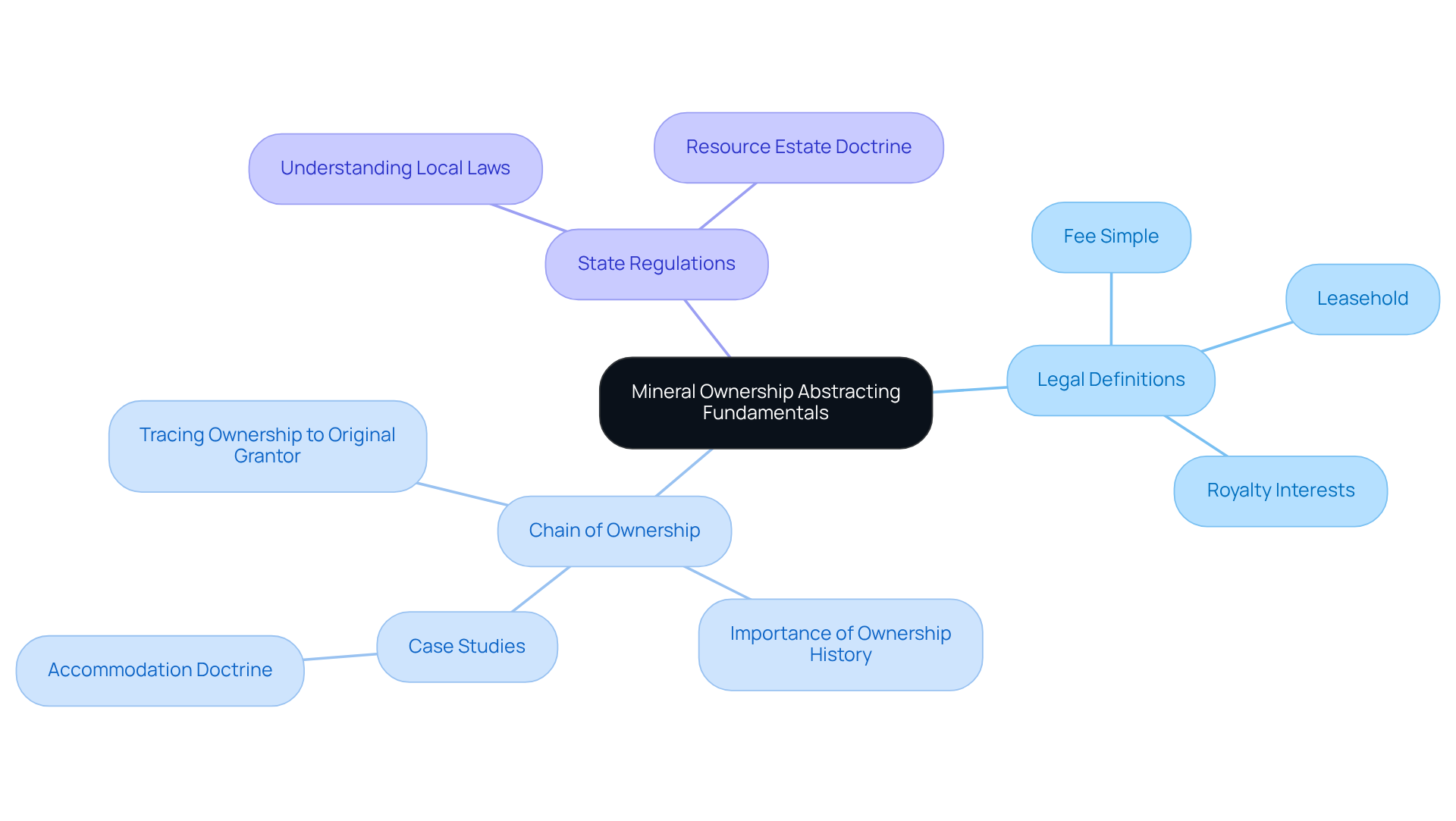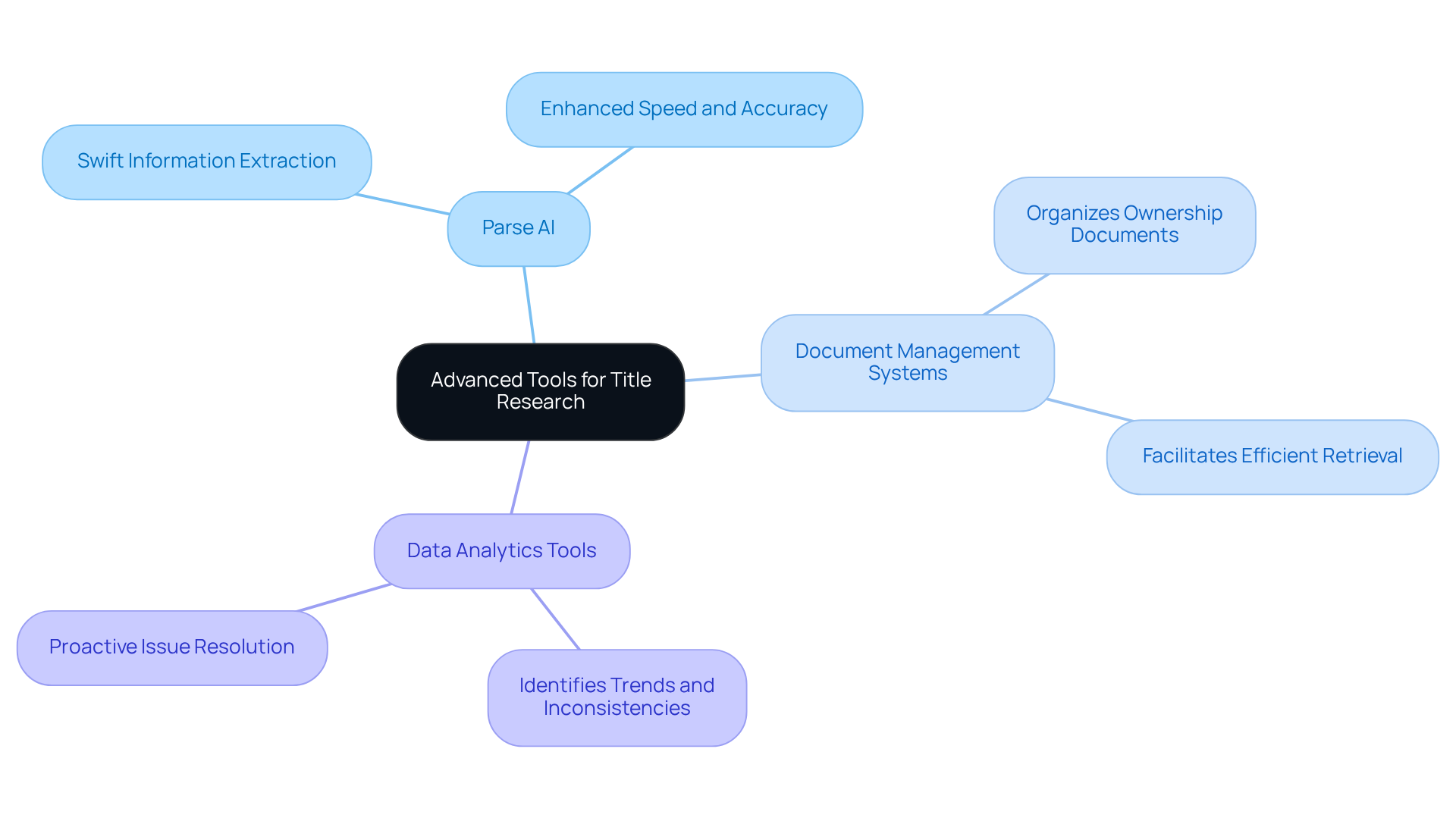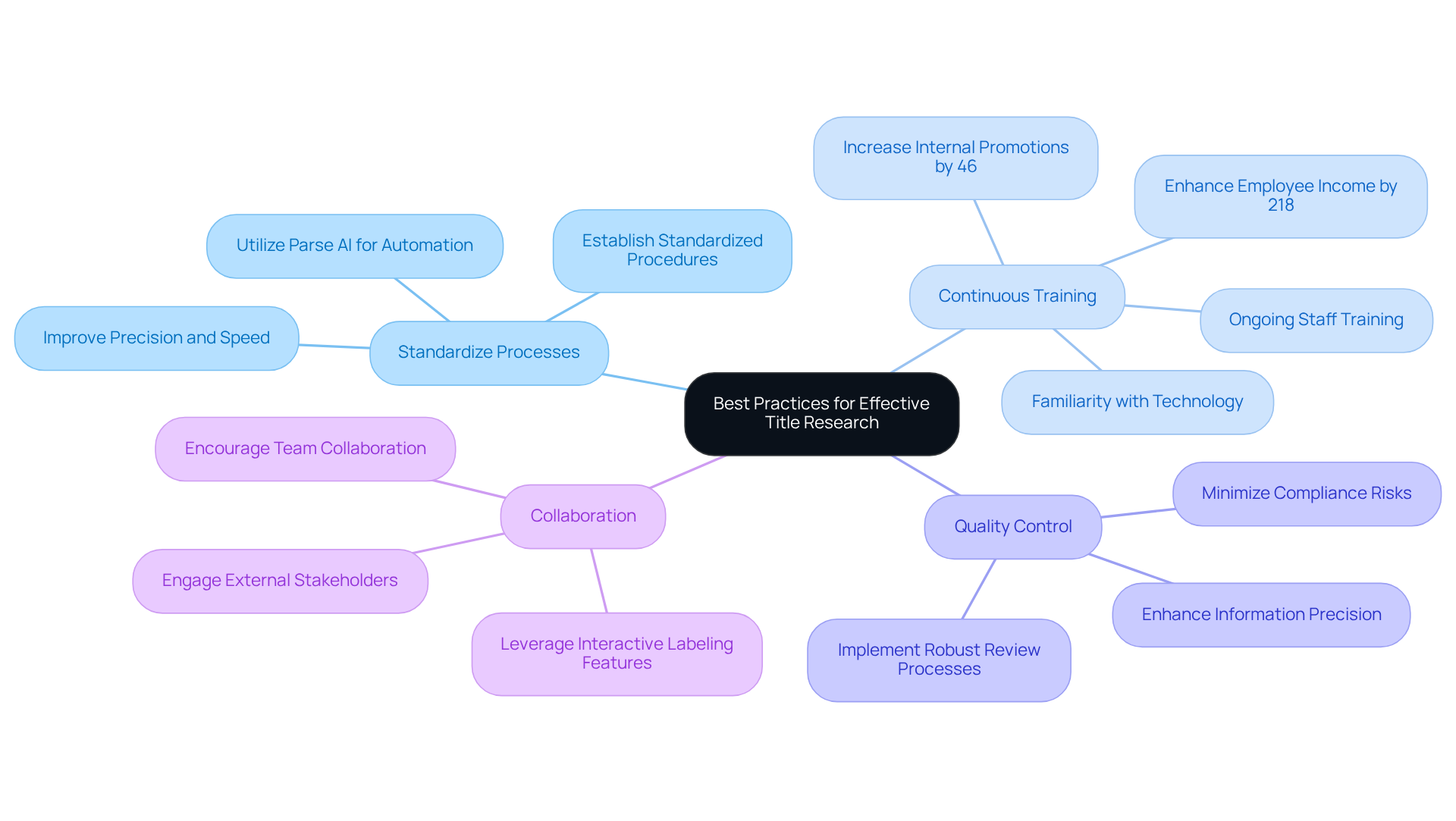Overview
The article highlights the critical role of advanced technologies in enhancing efficiency within mineral ownership abstracting. It delves into three pivotal tools:
- Parse AI
- Document management systems
- Data analytics tools
These innovations streamline the research process by automating data extraction, organizing documents, and identifying trends. Consequently, they lead to faster and more accurate title research, which is essential in real estate transactions.
Introduction
Understanding mineral ownership is a complex yet critical aspect of real estate, demanding meticulous attention to legal definitions, ownership chains, and state regulations. By harnessing advanced tools and best practices, professionals can streamline the abstraction process, significantly enhancing both efficiency and accuracy in their research. However, as technology evolves, researchers must ensure they are leveraging the most effective solutions to navigate the intricacies of mineral ownership. This article explores three essential tools that promise to transform the landscape of mineral ownership abstracting, providing insights that can lead to more informed decision-making and successful outcomes.
Understand the Fundamentals of Mineral Ownership Abstracting
Ownership abstraction of resources necessitates the recognition and documentation of entitlements associated with substances beneath a property, mandating a comprehensive understanding of the legal frameworks governing these entitlements. Key components include:
- Legal Definitions: Grasping terms such as 'fee simple,' 'leasehold,' and 'royalty interests' is essential, as each carries distinct legal implications that influence ownership rights. For instance, the fee simple estate encompasses both surface and mineral entitlements, whereas leasehold interests pertain to the temporary privileges granted to a lessee.
- Chain of Ownership: Establishing a clear chain of ownership is critical for tracing possession back to the original grantor. This process is vital for identifying , ensuring that all entitlements are accurately represented. Case studies, including those related to the accommodation doctrine, illustrate the complexities of property ownership and the importance of maintaining a thorough ownership history.
- State Regulations: Mineral ownership laws vary significantly among states, making it imperative to comprehend local regulations for compliance and accurate reporting. The prevailing resource estate doctrine, which governs many of these rights, emphasizes the balance between resource and surface ownership, highlighting the necessity for ownership researchers to stay informed about evolving legal standards.
By mastering these fundamentals, property researchers can greatly enhance their efficiency and accuracy using tools for abstracting mineral ownership, ultimately leading to more informed decision-making in real estate transactions.

Leverage Advanced Tools for Efficient Title Research
To enhance efficiency in research, professionals must leverage advanced tools that utilize machine learning and optical character recognition (OCR). These technologies automate the extraction of essential information from extensive records, significantly reducing the time spent on manual data entry and analysis. Recommended tools include:
- Parse AI: This platform excels in swiftly extracting vital information from title documents, enabling title researchers to complete abstracts and reports with greater speed and accuracy.
- Document Management Systems: Implementing a robust document management system organizes and stores ownership documents, facilitating more efficient retrieval and analysis.
- Data Analytics Tools: Employ data analytics to identify trends and inconsistencies in record documents, allowing for proactive resolution of potential issues before they escalate.
By incorporating these advanced tools for abstracting mineral ownership into their workflows, researchers can markedly enhance their efficiency, resulting in quicker turnaround times and improved accuracy. While the role of is acknowledged, further expert insights and data would be beneficial to fully comprehend its impact on workflow efficiency.

Implement Best Practices for Effective Title Research
To achieve effective title research, professionals must adopt that ensure accuracy and efficiency.
- Standardize Processes: Establishing standardized procedures for conducting title research is essential for consistency across all projects. By employing Parse AI's advanced machine learning tools, organizations can automate file processing, thereby improving precision and accelerating the verification of ownership and recording of findings.
- Continuous Training: Ongoing training for staff is crucial to keep them informed about the latest legal developments and technological advancements in title research. Companies prioritizing employee training report a 46% increase in internal promotions and a 218% higher income per employee, underscoring the value of continuous learning. Familiarity with Parse AI's platform further enhances staff capabilities in utilizing cutting-edge technology.
- Quality Control: Implementing a robust quality control process to review abstracts and reports for accuracy before submission is vital. This proactive approach minimizes compliance risks and enhances overall quality by catching errors early. Parse AI's machine learning extraction abilities significantly enhance the precision of information obtained from files.
- Collaboration: Encouraging collaboration among team members and external stakeholders, such as legal experts and land service professionals, fosters the sharing of insights and addresses challenges more effectively. Leveraging Parse AI's interactive labeling features facilitates better communication and collaboration in document processing tasks.
By implementing these best practices and utilizing Parse AI's innovative solutions, title researchers can significantly enhance their efficiency and accuracy with tools for abstracting mineral ownership, leading to more successful outcomes.

Conclusion
Mastering the intricacies of mineral ownership abstracting is paramount for professionals in the field. By grasping the legal definitions, establishing a clear chain of ownership, and remaining informed about state regulations, researchers can significantly improve their efficiency and accuracy. Furthermore, the integration of advanced tools such as machine learning and document management systems streamlines the title research process, promoting quicker turnaround times and enhanced data integrity.
Throughout this article, critical insights have been shared regarding the importance of:
- Standardizing processes
- Continuous training
- Quality control
- Collaboration in title research
These best practices, when paired with innovative technologies like Parse AI, empower professionals to navigate the complexities of mineral ownership with greater ease and precision. The benefits of adopting these methodologies are evident in the increased accuracy and efficiency they bring to the research process.
Embracing these tools and practices not only enhances individual workflows but also contributes to the overall success of real estate transactions involving mineral rights. As the landscape of mineral ownership continues to evolve, staying ahead of technological advancements and legal changes will be paramount. Consequently, investing in the right tools and cultivating a culture of continuous improvement will ensure that professionals remain equipped to meet the challenges of mineral ownership abstracting effectively.
Frequently Asked Questions
What is ownership abstraction in the context of mineral resources?
Ownership abstraction involves recognizing and documenting the entitlements associated with substances beneath a property, requiring a thorough understanding of the legal frameworks that govern these entitlements.
What are some key legal definitions important for understanding mineral ownership?
Important legal terms include 'fee simple,' which encompasses both surface and mineral entitlements, 'leasehold,' which refers to temporary privileges granted to a lessee, and 'royalty interests,' which relate to the rights to receive a portion of the revenue generated from mineral extraction.
Why is establishing a chain of ownership important?
Establishing a clear chain of ownership is crucial for tracing possession back to the original grantor, identifying potential claims or disputes, and ensuring that all entitlements are accurately represented.
How do state regulations affect mineral ownership?
Mineral ownership laws vary significantly among states, making it essential to understand local regulations for compliance and accurate reporting. The prevailing resource estate doctrine emphasizes the balance between resource and surface ownership.
What role do case studies play in understanding mineral ownership?
Case studies, such as those related to the accommodation doctrine, demonstrate the complexities of property ownership and highlight the importance of maintaining a thorough ownership history.
How can mastering the fundamentals of mineral ownership benefit property researchers?
By mastering these fundamentals, property researchers can enhance their efficiency and accuracy in abstracting mineral ownership, leading to more informed decision-making in real estate transactions.




